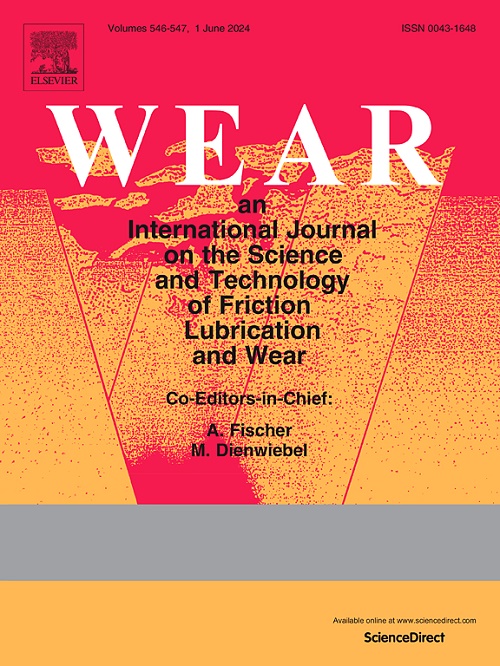不同强化处理对 ZL109 铝合金高温磨损性能的影响
IF 5.3
1区 工程技术
Q1 ENGINEERING, MECHANICAL
引用次数: 0
摘要
提高强度或硬度是改善 ZL109 铝合金在高温下耐磨性的一种广泛采用的策略。本研究旨在探讨各种强化处理对 ZL109 铝合金磨损性能的影响。研究采用了三种强化方法,即结构细化、应变硬化和沉淀强化,以达到相似的硬度水平。随后,在不同温度条件下,使用往复式球盘摩擦磨损试验机进行了磨损试验。结果表明,所有强化样品在室温下都表现出相似的磨损率(约 7.0 × 10-4 mm3/N-m)。然而,在 250 °C 时,沉淀强化样品的磨损率最高,为 1.32 × 10-3 mm3/N-m,其次是应变硬化和结构细化样品(约 1.7 × 10-3 mm3/N-m)。这种优异的性能归功于沉淀相,它能通过位错钉扎有效保持材料强度。相比之下,动态恢复和再结晶行为削弱了应变硬化的效果,而晶体生长则削弱了结构细化的效果。此外,随着温度的升高,磨损机制从磨损过渡到粘附和轻微氧化磨损。本文章由计算机程序翻译,如有差异,请以英文原文为准。
The effects of different strengthening treatments on wear performance of ZL109 aluminum alloy at high temperature
Enhancing strength or hardness is a widely employed strategy to improve wear resistance of ZL109 aluminum alloy at elevated temperatures. This study aimed to investigate the effects of various strengthening treatments on the wear performance of ZL109 aluminum alloy. Three strengthening methods, namely structural refinement, strain hardening, and precipitation strengthening, were employed to achieve a similar hardness level. Subsequently, the wear tests were conducted using a reciprocating ball-on-disk tribometer under different temperature conditions. The results showed that all the strengthening samples exhibited a similar wear rate (approximately 7.0 × 10−4 mm3/N·m) at room temperature. However, at 250 °C, the precipitation strengthening sample performed best with a wear rate of 1.32 × 10−3 mm3/N·m, followed by the strain hardening and structural refinement samples (approximately 1.7 × 10−3 mm3/N·m). This superior performance was attributed to the precipitation phase, which could effectively maintain material strength through dislocation pinning. By contrast, dynamic recovery and recrystallization behavior weakened the effectiveness of strain hardening, while crystal growth diminished the efficacy of structural refinement. In addition, the wear mechanisms transitioned from abrasion to adhesion and slight oxidative wear as the temperature increased.
求助全文
通过发布文献求助,成功后即可免费获取论文全文。
去求助
来源期刊

Wear
工程技术-材料科学:综合
CiteScore
8.80
自引率
8.00%
发文量
280
审稿时长
47 days
期刊介绍:
Wear journal is dedicated to the advancement of basic and applied knowledge concerning the nature of wear of materials. Broadly, topics of interest range from development of fundamental understanding of the mechanisms of wear to innovative solutions to practical engineering problems. Authors of experimental studies are expected to comment on the repeatability of the data, and whenever possible, conduct multiple measurements under similar testing conditions. Further, Wear embraces the highest standards of professional ethics, and the detection of matching content, either in written or graphical form, from other publications by the current authors or by others, may result in rejection.
 求助内容:
求助内容: 应助结果提醒方式:
应助结果提醒方式:


